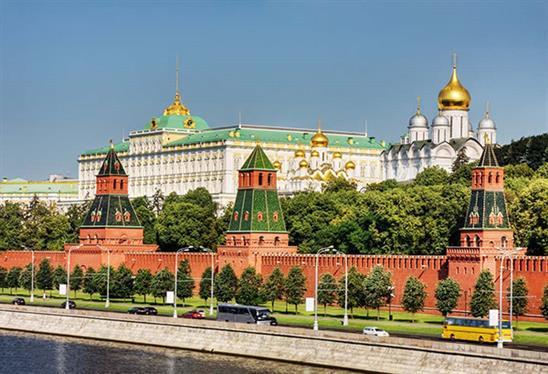The resilience and fortitude of Tula during World War II are etched in the annals of Russian history. But what exactly did the city and its people contribute to the war effort? Let’s delve into this fascinating period and discover the crucial role Tula played in securing victory.
Tula: The Unbreakable Shield of Moscow
Tula’s strategic location, a mere 180 kilometers south of Moscow, made it a critical defensive point during the Nazi advance in 1941. Think of it as the unbreakable shield protecting the heart of Russia. The city became a vital link in the defense line, preventing the Wehrmacht from completely encircling the capital. Its citizens, along with soldiers, tirelessly built fortifications, dug trenches, and prepared for the onslaught. Can you imagine the sheer determination and courage it must have taken to face such a formidable enemy?
Tula’s industrial prowess was another major factor in its wartime significance. The city’s factories, renowned for their arms production since the 17th century, rapidly shifted to wartime production. They churned out rifles, machine guns, mortars, and other essential weaponry for the Red Army. This arsenal played a vital role in equipping the Soviet troops defending Moscow. The city also became a center for repairing damaged tanks and other military vehicles, ensuring the Red Army maintained its fighting strength.
 Tula’s Crucial Role in Defending Moscow During World War II
Tula’s Crucial Role in Defending Moscow During World War II
The Tula Workers: A Symbol of Resistance
The people of Tula, both men and women, displayed remarkable resilience. They worked day and night in the factories, often under extremely difficult conditions. Food was scarce, and the winters were brutally cold, but their spirit remained unbroken. Many women took up jobs traditionally held by men, demonstrating their unwavering commitment to the war effort. These individuals weren’t just factory workers; they were the backbone of the resistance.
Stories abound of ordinary citizens performing extraordinary acts of bravery. They formed local militias, helped evacuate the wounded, and even engaged in sabotage behind enemy lines. Their resilience and selflessness were instrumental in bolstering the morale of the entire nation. What do you think motivated them to endure such hardships?
The Armory of Russia: Tula’s Weapon Production
Tula’s long-standing tradition of arms manufacturing proved invaluable during the war. The city’s factories, including the Tula Arms Plant, became powerhouses of weapon production. They produced millions of weapons, from the iconic Mosin-Nagant rifle to sophisticated artillery pieces. These weapons armed the Red Army and played a crucial role in turning the tide of the war. It’s fascinating to consider how the city’s historical legacy directly impacted the outcome of such a pivotal moment in history.
The development and production of the PPSh-41 submachine gun in Tula is a particularly noteworthy achievement. This iconic weapon, known for its high rate of fire and reliability, became a favorite among Soviet soldiers. Its impact on close-quarters combat was significant, especially during the brutal street fighting in Stalingrad and other urban battles.
 Tula Arms Factory During World War II: A Hub of Weapon Production
Tula Arms Factory During World War II: A Hub of Weapon Production
Beyond the Battlefield: Tula’s Contributions to the Home Front
Tula’s contribution extended beyond the battlefield. The city also played a critical role in supporting the home front. Hospitals were established to care for the wounded, and resources were mobilized to provide for the needs of refugees fleeing the fighting. The citizens of Tula opened their homes to those displaced by the war, demonstrating remarkable compassion and solidarity. Their efforts provided a much-needed lifeline to those affected by the conflict.
Tula also served as a crucial transportation hub, facilitating the movement of troops, supplies, and equipment to the front lines. The city’s railway network was vital for maintaining supply lines and ensuring the Red Army received the resources it needed to fight effectively. Imagine the logistical challenges involved in coordinating such a massive undertaking during wartime!
The Strategic Importance of the Tula Railway Network
The Tula railway network played a critical role in transporting troops, supplies, and equipment to the front lines during World War II. This intricate network of rail lines connected Tula to major cities and military bases across the Soviet Union, allowing for the efficient movement of resources vital to the war effort. The railway workers of Tula, often working under hazardous conditions, ensured the continuous flow of supplies to the front, contributing significantly to the Soviet victory.
 Tula Railway Network: A Lifeline During World War II
Tula Railway Network: A Lifeline During World War II
Conclusion
Tula’s contributions during World War II were multifaceted and essential to the Soviet victory. From its strategic location as a defensive bulwark to its industrial might and the unwavering resilience of its people, Tula played a pivotal role in the war’s outcome. The city’s legacy as a center of arms production, combined with the extraordinary sacrifices of its citizens, cemented its place in the history of World War II. We encourage you to share your thoughts and any additional information you might have about Tula’s wartime contributions in the comments below. Let’s continue this conversation and honor the memory of those who fought and labored for freedom. Perhaps you have stories from your own family history to share? We’d love to hear them!











